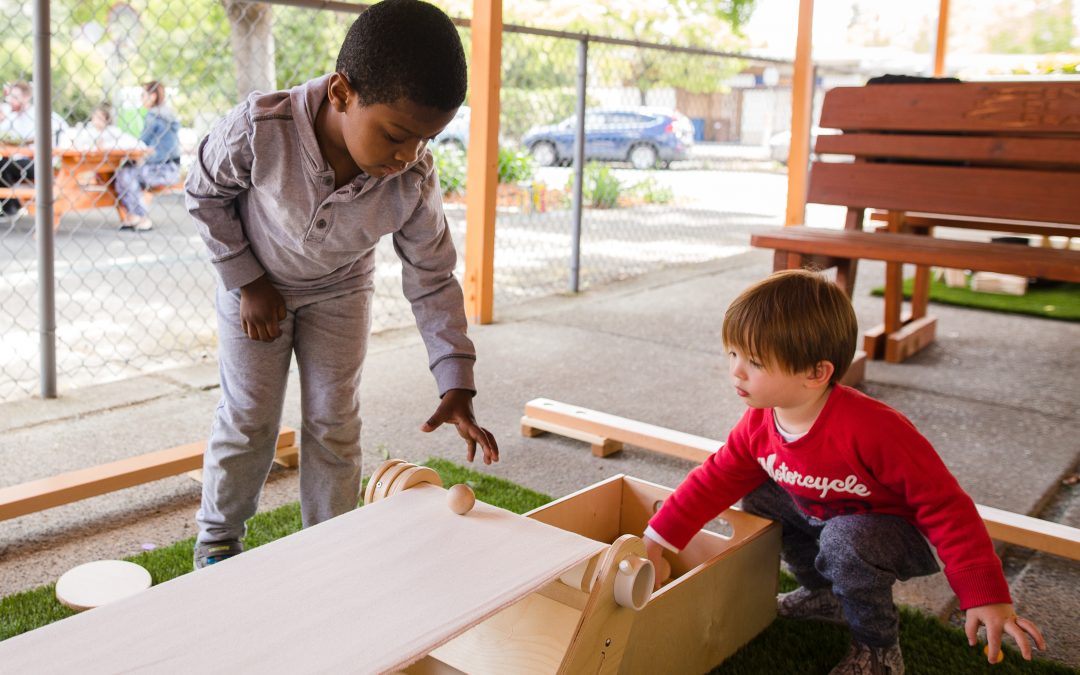This blog is part 2 in a series by Nancy Brown, retired early childhood educator and friend of Kodo. Read Part 1 here: Questions About the Changing Roles of Teachers
Learning Through Play in Preschool
Preschool teachers are fortunate. We don’t have to tell children to do their work before they can play. We know that through spontaneous and extended play, curiosity and creativity will blossom and that children will learn. In fact, in preschool, children begin to acquire all the skills listed below as they prepare to meet the demands of the twenty-first century. Designing a program around these as goals might make for a pretty impressive program.
Skills for the twenty-first century can be grouped in three categories:
- Learning Skills: Critical Thinking, Creative Thinking, Collaboration, and Communication
- Literacy Skills: Information Literacy, Media Literacy, and Technology Literacy
- Life Skills: Flexibility, Initiative, Social Skills, Productivity, and Leadership
Have you found in your program that play gets squeezed between teacher-directed time and direct instruction? Perhaps play has become more like an elementary school recess, a time to expend some energy, or blow off some steam. That’s what can happen when we focus on academic learning only and stop trusting that play opens children up to new ways of thinking and knowing.
Do you wonder together with children, engage in studies and projects to examine their world discoveries in depth? Wondering together supports the development of a learning community, one based on inquiry and exploration. As you participate and wonder along with children, the value of their ideas and emerging understandings will increase.
Can early learning occur without direct instruction? Probably not. But teacher involvement has many faces. It encompasses direct instruction but also includes every way we support children’s growth and learning. Teachers observe, think with the children, listen to them and reflect back their thinking with a little teacher-thinking mixed in.
How much time do you dedicate to teacher-directed inquiry? It’s a negotiation, isn’t it? Maybe we explore in the sandbox topics like plumbing, about pipes underground, and get the local plumber out for a visit. Maybe we bring in a paleontologist in to dig for bones or bring in a dowser to walk around the playground with a stick, searching for water. Maybe a child’s mother could come in to repair the leak. We do those things if the children’s wonderings take us in those directions. We pay attention, listening and watching for key questions and the direction of their interest.
What about academic learning? Are your walls already full? The environment print rich? Or do you have space for the next project, the next documentation panel? When we take out the scales and weigh the sand extracted from the holes, we could keep track of the weights. We could use the words “ounces” and “pounds” in context, rather than posting them on a word wall. When we measure the depth of those holes, we could use traditional measuring tools like rulers but can also leave space for children’s invented tools, like shoelaces and paperclips. We might have the children sit and witness real-time writing, as we print numerals on paper at group time. Why not? We can make space and time for that. If you’ve allotted time for that, then spend a little more time. Use it for recording children’s ideas and questions; maybe make a chart, a mind-map, get out the camera, write a learning story.
As stated earlier, we know that through spontaneous and extended play, curiosity and creativity will blossom and that children will learn. So, leave plenty of time for play, weave readiness activities into the children’s experience, spend time wondering with them, and make space on your walls for the stories of their learning to be told.
 This blog was written by Nancy Brown, Early Childhood Educator
This blog was written by Nancy Brown, Early Childhood Educator
Nancy brown is a retired Early Childhood educator and co-creator of Highrise Building Sets. After having taught ECE at Cabrillo College in Aptos, CA, she directed programs and taught first grade and preschool since 1972. She recently developed a site for teacher reflection and individualized professional development for the California Department of Education, Early Education Division and makes toys and writes books for her six grandchildren.


